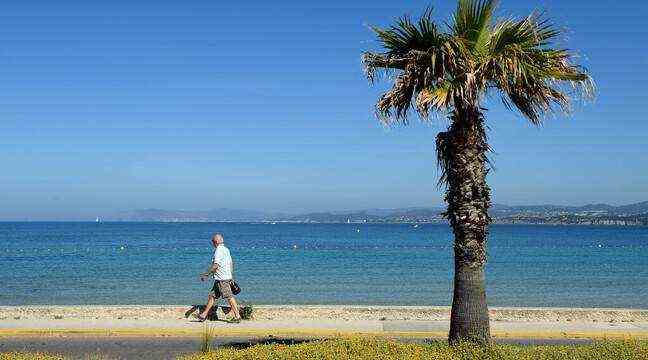The summer school holidays began on Tuesday, and concern more than 12 million children and adolescents. From this Friday, the roads of France promise to be crowded with juillettists leaving to enjoy the beach or the countryside. If July is obviously marked by holidays, this year it is also synonymous with an increase in coronavirus cases. For the first time in more than a month, France is experiencing more than 4,000 new positive cases for Covid-19 per day on average over the past week, while it had less than 1,800 per day the week of June 26. If the growth rate continues, France could exceed 10,000 daily positive cases before the end of the month.
Faced with this return of the epidemic, the holidays will be closely scrutinized. Are they a good or a bad thing on the health front, can they lead to a decrease in the growth of cases or, on the contrary, do they carry a risk of accelerating the epidemic?
What are the potential good points of these holidays?
School holidays concern more than twelve million students, who will no longer meet in establishments of hundreds of people, wearing masks sometimes little or poorly respected, not to mention school canteens where wearing a mask is obviously impossible. The same goes for employees, more often on leave during the period of July-August and in fact less present for meals in companies.
Meals in closed places, whether at school or at work, have often been presented as the hole in the racket of sanitary measures, because according to a study by the Institut Pasteur, 80% of contaminations occur in closed places. “With the holidays, there is no more mixing of children and less mixing of employees, that’s an excellent thing”, presents Mahmoud Zureik, professor of epidemiology and public health at the University of Versailles-Saint -Quentin-en-Yvelines.
In addition, the increase in cases and the presence of the Delta variant, generate an increase in the number of appointments for first injections of vaccine. Compared to last week, appointment scheduling for a first dose increased by + 40% this Monday, + 10% this Tuesday, + 25% this Wednesday, + 35% this Thursday.
What are the potential bad points?
While the intermingling of children and at work will decrease, this is not the case for all gatherings. “There will be mixing of the population, between countries but also between regions”, notes Mahmoud Zureik. Not really good health news, he recalls, since it “promotes the spread of the virus and the epidemic”. And no need to go to Portugal or Spain, two countries that the government recommends to avoid because of the epidemic outbreak, to participate in this mixing. A resident of Paris, a city with an incidence of 63 cases per 100,000 inhabitants – the highest in metropolitan France -, going to stay in Haute-Vienne, a department with an incidence of 6, is no less dangerous than returning from Iberian Peninsula.
Beyond that, there are all the festive events offered by the holidays: bars, restaurants, parties, aperitifs, etc. So many moments of possible contamination, especially since the frivolity of summer and alcohol helping, barrier gestures are generally less respected. “These moments lead to mainly intra-family and intra-friendly contaminations. It is possible to try to limit these contaminations to these circles, by avoiding discotheques, by favoring the exteriors of bars and restaurants, which is simpler during the summer, and by avoiding places that are too crowded ”, advises Mahmoud Zureik.
What have the previous vacations taught us?
In general, for a year and a half, during the holidays, there is no explosion of cases, rather a decline or stagnation, in the worst case. “On the other hand, after the holidays, we witness a resurgence of the epidemic, the intra-family and intra-friendly contaminations becoming with the return in person an intergenerational mixing which affects the populations most likely to have serious forms”, s’ worries Mahmoud Zureik, even if he recalls that mass vaccination of populations at risk (more than 80% of over 60s have received at least a first dose) should normally cushion hospitalizations and deaths.
To focus more specifically on the period that concerns us, the summer of 2020 – like the beginning of summer 2021 – was marked by a major increase in the incidence, mainly among young people. For the moment in 2021, it is the contaminations among the age groups 10-19 years and 20-29 years which return the most. The 10-19 age group could see its increase stop by the school holidays as said previously.
For 20-29 year olds, in whom the incidence rate fell from 36.1 the week of June 21-27 to 64.9 the week of June 28-July 4, as long as bars and restaurants remain open indoors, this should continue to increase. “They are unlikely to develop serious forms, which leads to a decorrelation between cases and hospitalizations,” recalls Mahmoud Zureik. The challenge will be to avoid intergenerational mixing as in September 2020. If this is the case, the 2021 holidays will have been a perfect success.

